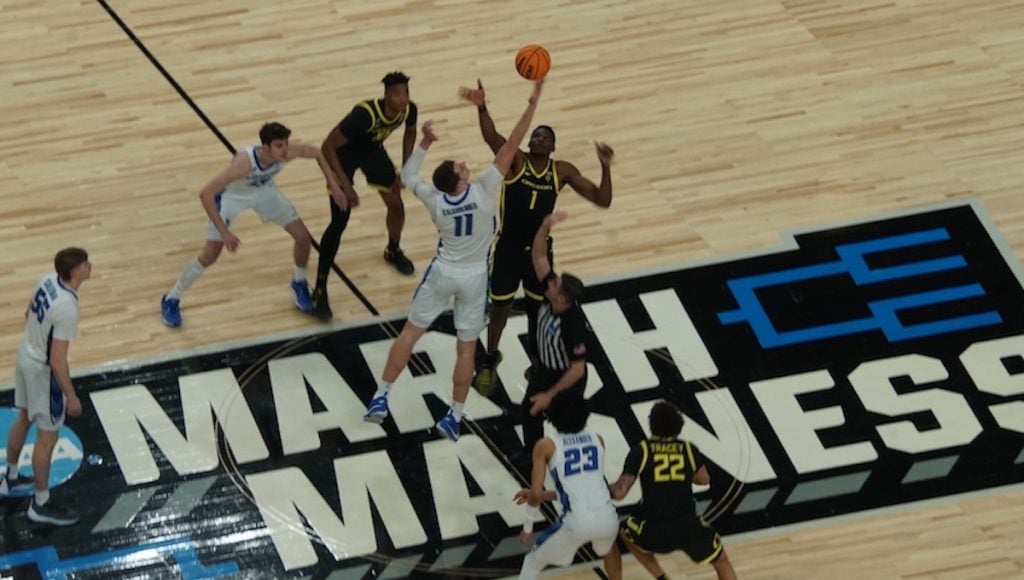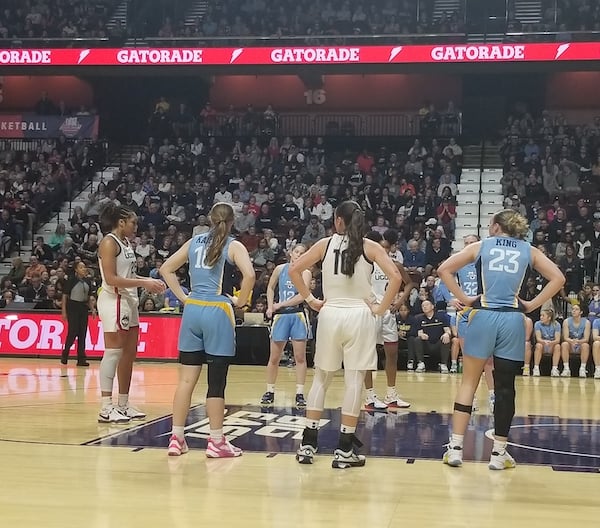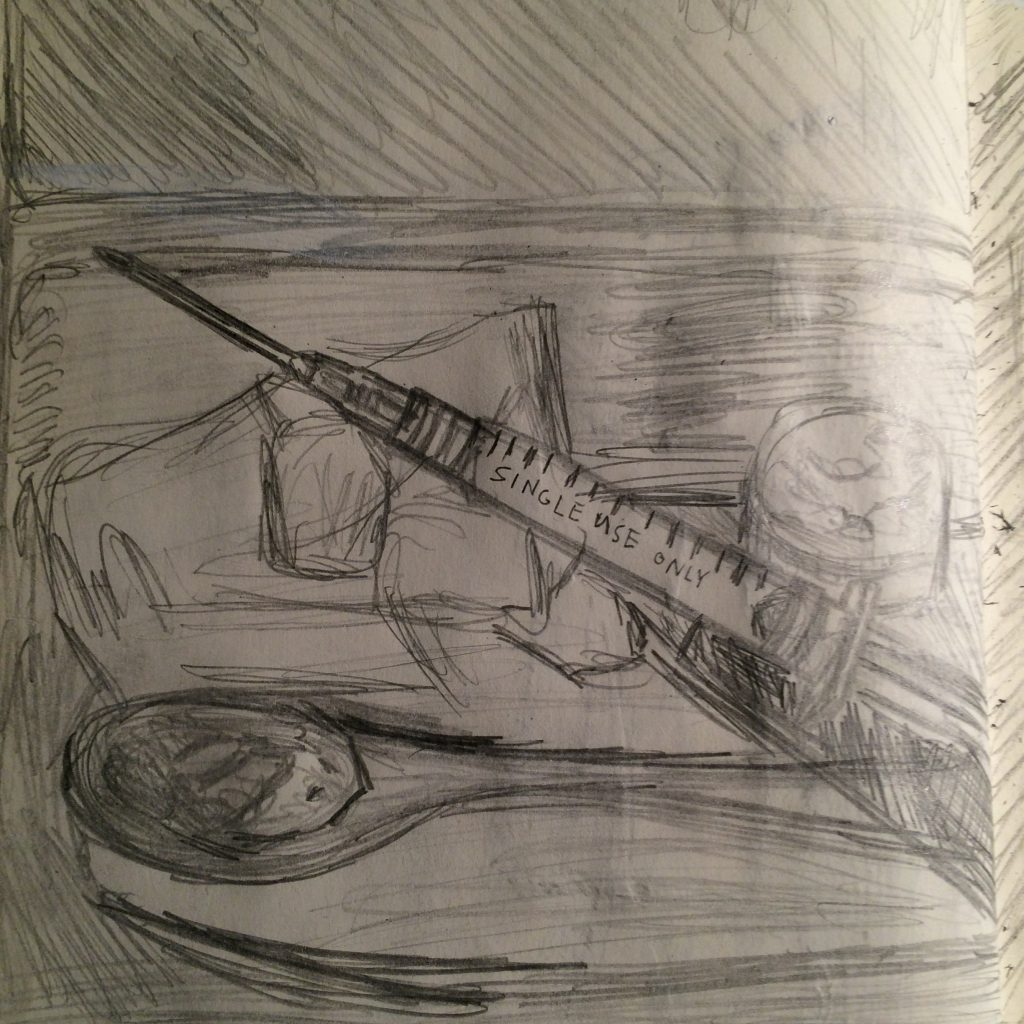Don’t Look Away
Written by Mary Mellon on 03/13/2019
The summer of my junior year of college, the man I loved abandoned me for heroin, and I retreated inside my eating disorder. I began volunteering at a homeless shelter for women in Chicago, IL, despite struggling with body dysmorphia to the point where I otherwise refused to be seen. The night I came home from my first shift I glanced in the mirror and for a few minutes was okay with my reflection. This helped me realize that body dysmorphia served a purpose in my life and was a maladaptive coping mechanism, like the eating disorder I had been battling since age fourteen. I later found treatment at a program called Insight, in Chicago, IL, but not before things got worse. Like many Americans struggling with a mental health condition ignorance about what what I was dealing with prevented me from getting the help I needed sooner. According to the National Alliance of Mental Illness, adults “living with a serious mental health condition die on average 25 years earlier than other Americans, largely due to treatable medical conditions.” 60 percent of adults with mental illness receive no treatment and nearly half of children with mental illness between 8 and 15 are barred from treatment as well. This has to do with a number of factors, including cuts to mental health care, poverty, and stigma. Stigma is the only factor I feel qualified to address at this time.
In the past, when mental illness was unambiguously regarded as a moral or spiritual failing, madhouses doused patients in hot or cold water, shackled them in manacles, and whipped them. By the 1800s, wealthy families had the right to shut away mad, difficult, or eccentric relatives in private institutions, using their money to ensure “discreet silences.” This practice was called “the trade in lunacy” and parallels tough love programs today. Despite numerous studies proving that the Troubled Teen Industry is ineffective and even harmful to children, wealthy parents can ship their child away due to behaviors as commonplace as skipping school. It does need to be noted that wealthy Americans only account for a small percentage of the population and that makes our prison system a bigger priority. Since deinstitutionalization took hold in the 1970’s, our prisons have indeed become the largest mental health care providers in America. In 2013, the Wall Street Journal ran an article about this called “The New Asylums.” According to the article, the three largest jail systems—Cook County, Los Angeles County, and New York City—house more people with mental illness than the three largest state-run mental hospitals in America combined. Little has changed in the succeeding years.
It is uncomfortable being open about personal topics because people can judge you but familiarity breeds tolerance. I first became acquainted with the stigma of mental illness when I was six-years-old. I was a difficult child and not blameless. I struggled with depression, in large part due to my lack of belief in God. I was prone to temper tantrums if I thought my parents were being unjust. I also cared deeply about other people and my mom likes to tell a story about how I would give my pocket money to homeless people on the street. I already indemnified with anyone society might deem an outsider, because I was odd, different, apart. When my parents divorced the situation exacerbated my depression and I was taken to a therapist who misdiagnosed me with bipolar disorder. The medical report the therapist gave my mother reads, “Mary is a first grade student, and doing very well academically. Recent testing confirms her intellectual giftedness…She speaks about her persistent thoughts of death, understands death to be irreversible; feels things would be better for her if she were dead. She reports constant difficulties falling asleep, with frequent nightmares…” Because my paternal grandparents were bipolar and severely abusive of my father, my mother was disturbed. Like many good people she harbors some prejudices and she began to tell me that if I did not take medication I might turn out like my grandparents. I took this to mean that she believed I would be a child abuser or commit suicide like my grandfather. I began to avoid windows, mirrors, and even puddles on the ground. I drew away from my few friends at school. Isolation reinforced the impression that I was unlovable but intellectually I rebelled; I had a sense of what prejudice was thanks to attending good schools and my mother’s love of literature.
The misdiagnosis shaped my whole life however. Prior to age fourteen I took pride in my body. From the neck down my exterior matched the images I saw in store windows and in magazines and this seemed like the one way I fit with what society expected me to be. After eighth grade my relationship to my body changed. I developed an eating disorder and was diagnosed with anorexia at 80 pounds. When I recovered physically I was afraid to be seen. I stopped leaving the house and refused to go to school. I was sent to a character education boarding school called Hyde, in Bath, Maine, and a Wilderness camp in Bangor, Maine, where we were forced to live outside in below zero weather for seven to ten weeks. Being broken down ground my self-esteem into a finer powder. The only ray of hope came in the guise of relationships I began to form outside my family. There were kids who reached out to me in high school. There was my first boyfriend, who despite our relationship problems later, drove from Syracuse University to Chicago to visit me while I was in College at The School of the Art Institute of Chicago.
Both tough love programs and our prison system have a tendency to pull in kids who struggle with problems such eating disorders, cutting, substance abuse, and addiction, and it is therefore of little surprise that many of the other kids at Hyde were also struggling. The problem from my perspective is that because such behaviors are often symptomatic of trauma or another form of mental illness beating on already troubled kids is unlikely to help anyone believe they can aspire for more. On March 2, we lost another classmate from Hyde to a drug overdose, and while I did not know him well enough to know the circumstances each time we lose someone (this is by no means the first time we have lost a classmate) I wonder if access to real treatment might have helped. I know had I been put in a program like Insight earlier I could have avoided several near death experiences myself.
In 2006, the journalist Maia Szalvitz wrote a book exposing tough love programs as exploitive, abusive, and sometimes even deadly. This was certainly the case with 16-year-old Aaron Bacon, who died in a Wilderness camp in Utah called North Star due to a treatable ulcer. When Aaron Bacon mentioned his symptoms he was called “gay” and a “faker.” Much of the food at North Star was inedible if campers couldn’t master fire making with a bow drill, and because Aaron was sick, he had difficulty with this. At one point he went for five days on a can of peaches, a six-inch raw lizard, and a cooked scorpion. By the time he died, he had lost 23 pounds in 20 days, and his death was later ruled negligible homicide.
Given the correlation between problematic behaviors and trauma or mental illness it makes more sense to address the underlying issues someone might be dealing with, work on developing healthy coping skills, and offering support rather than punishing someone. Many people simply need to survive childhood and this is made harder if you further traumatize children with “tough love” (where was the love?) and prison sentences. In July 2015, President Obama became the first president to visit a federal correctional facility, and his response to nonviolent drug offenders was refreshingly pragmatic. “It’s not normal,” President Obama said, in regard to the rate of incarceration in the U.S. “Its not what happens in other countries. What is normal is teenagers doing stupid things. What is normal is young people making mistakes.” This opinion is backed by research. In Help At Any Costs, Maia Szalvitz also writes, “For those involved in alcohol or other drugs, research finds that with parental guidance and no professional help, the majority of teens, even the most troubled, end their heavy drinking and/or out-of-control drug use by their mid-twenties. According to a government-funded Monitoring the Future survey, 6.5 percent of nineteen—and twenty-year-olds smoked marijuana in 2003. But just 3.5 percent of twenty-five and twenty-six year olds did so—46 percent fewer. Similar statistics apply when you follow a group over time, rather than look at just one year. The older people get, the less likely they are to drink to access, take drugs, or commit crimes. The dramatic reduction in drinking that occurs when people start regular full-time employment (and particularly when they start work after college or get married) is well documented.[1]”
Natural development is stunted when we pathologize normal behaviors. After reading Help At Any Costs, I believe Hyde was a piece of cake in comparison to other tough love programs, but many children come out of tough love programs with PTSD. I know for me the constant verbal assaults only amplified the part of me that believed I was worthless and for many years after leaving Hyde I struggled to do things I used to have confidence in, like write. In Help At Any Costs Maia Szalavitz describes what verbal attacks in these programs can be like, “
“Formally, they are known as ‘thought reform’ or coercive persuasion’ strategies; colloquially, some call them ‘brainwashing.’ Such tactics are also used by groups like est; religious, political, and therapeutic cults; prisoner-of-war camps; and government interrogators.” Boarding school mimicked childhood. Intellectually, I could rebel, but not emotionally. I was an outsider at Hyde but did not see anyone else get better either. Students periodically tried to run away, were sent to Wilderness camps, or hospitalized. People were constantly caught doing drugs and some people tried harder drugs because suddenly they had access.
We used to say that Hyde was for “fucked up rich kids” but at least rich kids have the privilege and resources to dodge prison sentences, get proper representation if they are arrested, and get help if they look for treatment later. Many Americans are incarcerated for the same behaviors boarding school was supposed to address but are not that lucky. There is a strong correlation between adverse childhood experiences and substance abuse and for those facing prison sentences for drug offenses being locked up is unlikely to help. According to The Prison Policy Initiative, a nonprofit geared towards fighting mass incarceration, “the system of mass incarceration costs the government and families of justice-involved people at least $182 billion every year.” The fact that the national rate of recidivism is 50 percent and this is not random. When inmates are released from prison they often have little to no money, and having a criminal record will bar them from many jobs. In many states anyone with a federal drug conviction is banned from accessing federal food benefits, as well as federal student aid, if they plan to return to college. Their family may live in public housing, and if they do, some places require tenants to sign papers that prohibit anyone with a conviction from entering their home. The bad news does not stop there. Some states require paroles to pay for parole and probationary services, and toss people back in jail if they are unable to pay these fees. But that money might be hard to find if you are having difficulty finding food, shelter, and employment. Further, if the person is indeed an addict and you subscribe to the belief that addiction is a maladaptive coping mechanism, it would make sense that someone in that situation would have a greater need to cope.
When laws change situations that may previously have been
stigmatized are gradually normalized. Gay marriage was only legalized in 2015,
and just as The Women’s Suffrage Movement brought awareness to the reality of
sexism, LGBTQ rights will hopefully gain equal emphasis in school given time.
This will allow LGBTQ Issues to further penetrate the mainstream
consciousness and reduce unfounded prejudices. People with mental illness and
their supporters should also take a stand. We need to stop hiding our faces and
speak openly about struggles with mental heath, put money into mental health
services, and reform our prison system.
[1] Help At Any Costs, page 198





